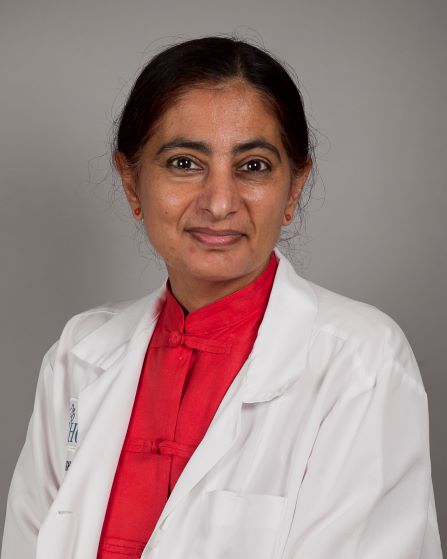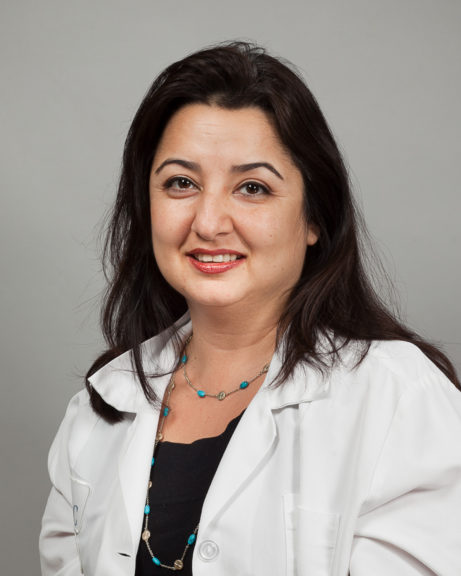As the grip of the COVID-19 pandemic continues to weaken, Dr. Jasjit Singh, CHOC’s medical epidemiologist and medical director of infection prevention and control, recalls a ghost of outbreaks past.
Nearly five years ago, a mysterious outbreak of oral infections that eventually was traced to a clinic in Anaheim alarmed parents and dominated the local news.
The health crisis spurred Dr. Singh and a multidisciplinary team at CHOC, working with several community partners, to search for answers – and to provide optimal care for the patients, whose median age was 6.
Over 100 children were admitted to CHOC for evaluation, of whom 70 were confirmed cases, hospitalized for an average of more than a week.
Some suffered permanent tooth loss – as many as six teeth.
The culprit: a Mycobacterial abscessus infection that was detected after each child underwent a pulpotomy procedure, or “baby root canal,” to remove or treat an infected tooth at the Anaheim clinic between Jan. 1 and Sept. 6, 2016.
The outbreak turned out to be the largest ever of invasive Mycobacterial abscessus infections associated with a dental practice. The commonly occurring M. abscessus bacteria is found in water, dust, and soil, but it’s an uncommon cause of healthcare-associated infection.
Between July and September 2016, three patients were admitted to CHOC with atypical infections. All had some combination of facial cellulitis, dental abscess, and/or cervical adenitis that had been present for weeks.
“We had our first child present with what appeared to be a really unusual infection,” Dr. Singh recalls. “Our first thought was, ‘What’s wrong with this child’s immune system?’
“When the second child came in, one of my very astute colleagues, Dr. Negar Ashouri, ascertained that the child had been treated at the same dental clinic. She alerted the OC Health Care Agency immediately, who soon found unexplained symptoms brewing in other kids.”

Dr. Jasjit Singh 
Dr. Negar Ashouri
A mobilized effort
The California Department of Public Health, the Centers for Disease Control and Prevention, and the Dental Board of California worked with the OC Health Care Agency (OCHCA) to investigate the infections.
The team at CHOC helped OCHCA with the epidemiologic and diagnostic probe. Of 1,081 at-risk patients, 71 case patients (22 confirmed; 49 probable) were identified.
Here at CHOC, 27 of the most severely affected children were treated with a complex regimen of antibiotics, including clofazimine, marking the largest number of children to ever receive that medication outside of treatment for leprosy.
Details of the work of Dr. Singh and many others recently was published by Oxford University Press on behalf of the Infectious Disease Society of America.
Publication of the paper, “Invasive Mycobacterium abscessus Outbreak at a Pediatric Dental Clinic,” was delayed a year and a half by the COVID-19 pandemic, Dr. Singh says.
The infections were caused by untreated municipal water the Anaheim clinic was using for drilling and irrigation during pulpotomy procedures. Because pulpotomies are not considered surgical procedure, sterile water is not required.
A change in state water standards
The work of Dr. Singh and an army of others led to a change in water standards for pediatric dental procedures in California.
In September 2018, the governor signed into law a bill that specified as unprofessional conduct the use of water that is not sterile or that does not contain recognized disinfecting or antibacterial properties when performing dental procedures on exposed dental pulp.
Dr. Singh is hopeful that the publication of the paper, whose listed authors include 11 CHOC physicians and three officials with the OC Health Care Agency, will lead to similar laws being enacted in other states.
As the paper puts it, “The authors believe the measure adopted in California for the use of sterile water for all pulpotomies is an appropriate standard which we would like to see embraced by the American Dental Association and state dental boards around the country.”
Dr. Singh credits the multi-disciplinary team for caring for the patients. The team included specialists in infectious disease, oral surgeons, ENT doctors, radiologists, dentists, pharmacists, and staff members of Providence Speech and Hearing, among others.
“These were normal, healthy children that were affected,” Dr. Singh says. “The multi-disciplinary coordination was a huge part of the success of this story. Still, many of the patients who lost permanent teeth will need dental rehabilitation in the future. It was a very difficult period for these families.
“We talked to national experts and really delved through whatever literature was out there,” Dr. Singh adds. “We all came together to get the kids and families through this with the least morbidity and the best long-term outcome possible.”
Read about Dr. Jasjit Singh and Dr. Antonio Arrieta earning a global distinction for excellence.
COVID-19 vaccine guide: Information to share with patients, families




